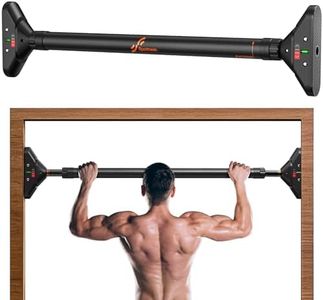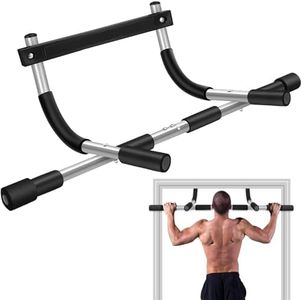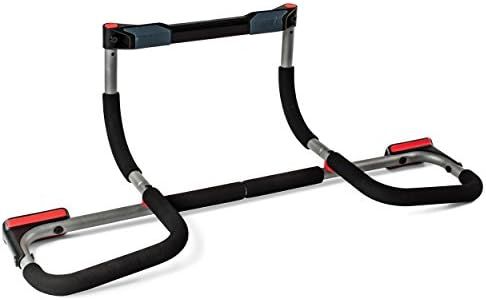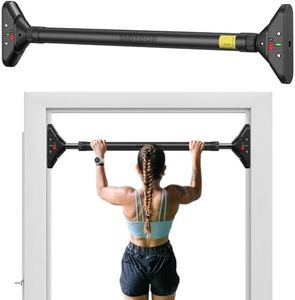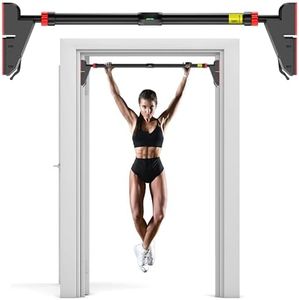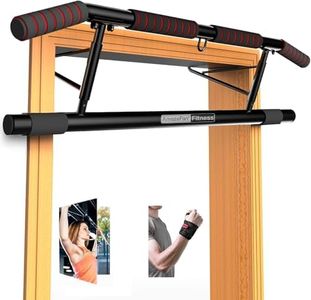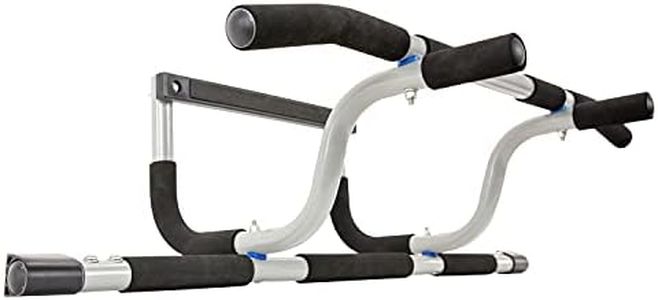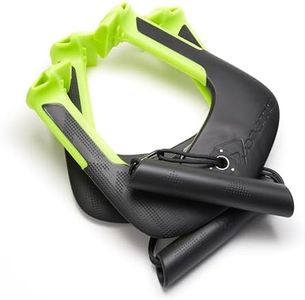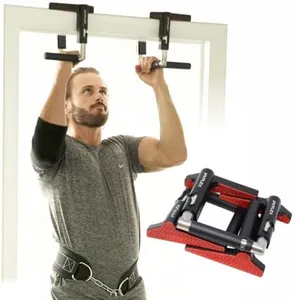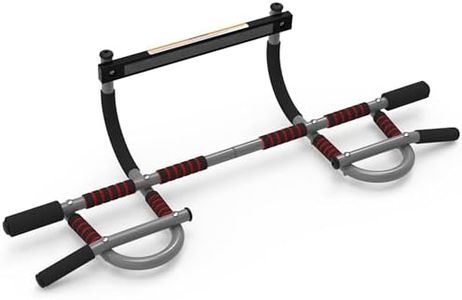We Use CookiesWe use cookies to enhance the security, performance,
functionality and for analytical and promotional activities. By continuing to browse this site you
are agreeing to our privacy policy
10 Best Doorway Pull Up Bar
From leading brands and best sellers available on the web.Buying Guide for the Best Doorway Pull Up Bar
Choosing a doorway pull-up bar can make a big difference in your fitness journey at home. These tools are useful for bodyweight exercises like pull-ups, chin-ups, and can often support different grips or even act as a base for resistance bands. But not all pull-up bars are the same, and picking the right one involves paying attention to a few key features that impact safety, ease of use, compatibility with your doorway, and workout versatility.Mounting TypeThe mounting type refers to how the bar attaches to your doorway. The two common types are pressure-mounted (no screws required, they use tension to stay in place) and fixed-mounted (screwed or bolted in for permanent installation). Pressure-mounted bars are easy to move and don’t damage door frames, but they can be less stable with higher loads or intense workouts. Fixed-mounted bars require installation tools and leave holes, but they’re more secure. If you rent or want hassle-free setup, pressure-mounted might be best. If you seek maximum stability and plan on heavy use, fixed-mounted is worth considering.
Weight CapacityWeight capacity is the maximum load the bar is designed to safely hold. This is crucial for your safety; using a bar beyond its rating can lead to dangerous falls or damage. Entry-level bars may support up to 200 lbs, while sturdier bars can hold 300-400 lbs or more. If you plan to add weights, or if multiple users of varying sizes will use the bar, opt for a higher capacity. Always consider your body weight and any equipment you’ll use to select a suitable option.
Doorway CompatibilityDoorway compatibility describes the size range (width and trim depth) the bar can fit. Not all bars fit every opening—some are adjustable for wider doors, others only work with standard frames. Measure both the width of your doorway and the thickness/depth of its molding before choosing, and check the product’s specification for supported measurements. If you live in an older or unusually-built house, double-check these numbers to avoid disappointment.
Grip OptionsGrip options relate to the types of handles or positions the bar offers for doing pull-ups. Basic models provide a single straight bar, allowing only standard grip pull-ups and chin-ups. More versatile bars have angled or perpendicular grips, permitting wide, narrow, hammer (neutral), and mixed grips. Think about your workout goals: if you want to vary your exercises or target different muscle groups, choose a bar with multiple grip positions. For beginners or those focused on basics, a simple straight bar may suffice.
Padding and ComfortPadding means the presence of foam or rubber on the handles, which improves comfort and reduces slipping. Some bars have thick, high-density foam grips, while others have minimal or no padding. If you plan long workouts or sweat a lot, thicker padding can make your experience better and prevent blisters. However, some users prefer less padding for a firmer grip. Think about your personal comfort preference and how sensitive your hands tend to be.
Portability and StoragePortability covers how easy the bar is to move, store, or disassemble. Some bars quickly detach from the doorway without tools and are compact for storing in a closet, while others are bulky or semi-permanent. If you need to clear up space regularly or travel and want to bring your bar, look for models that are light and easy to pack away. If your bar stays put most of the time, portability matters less.
